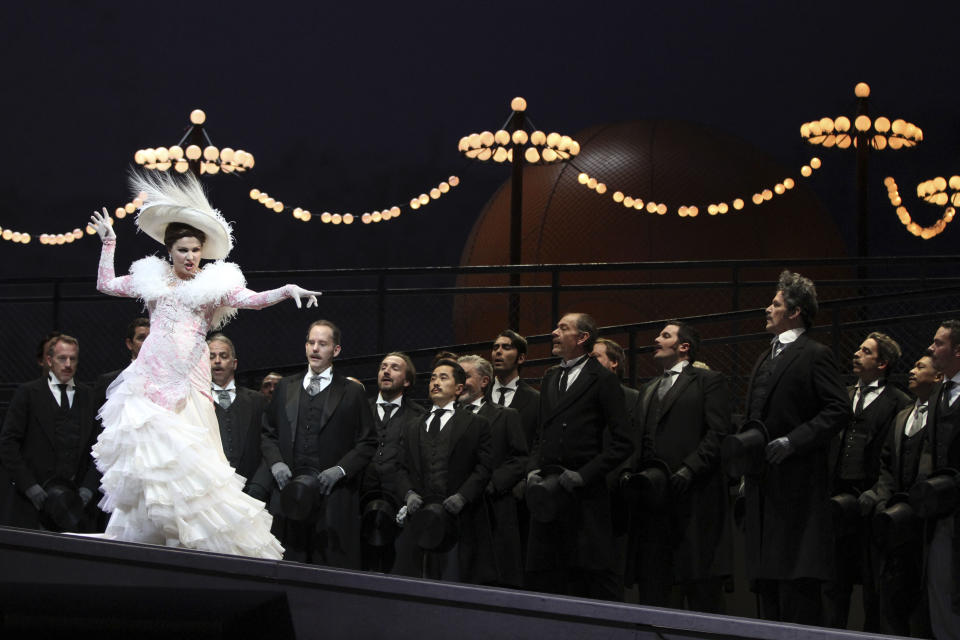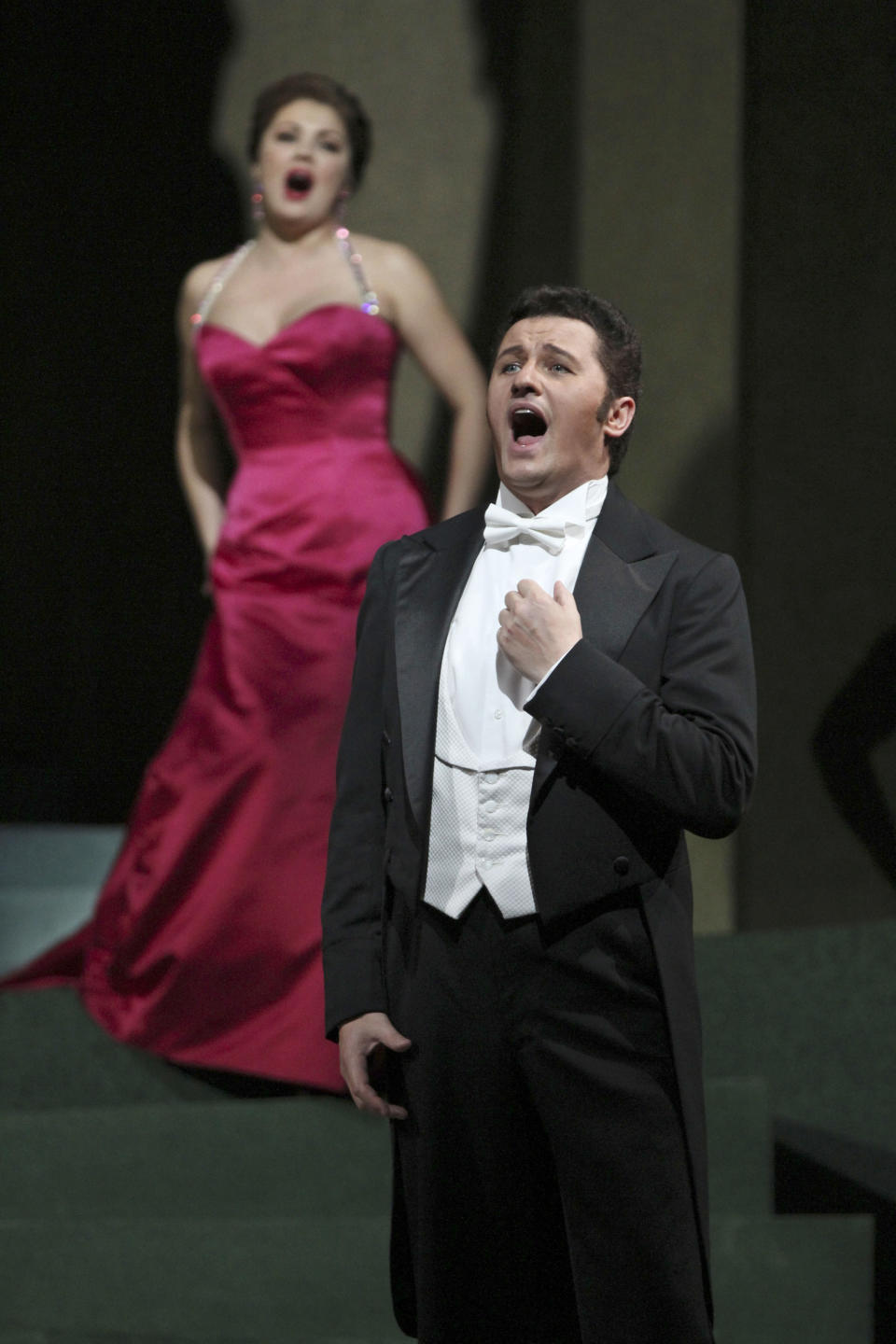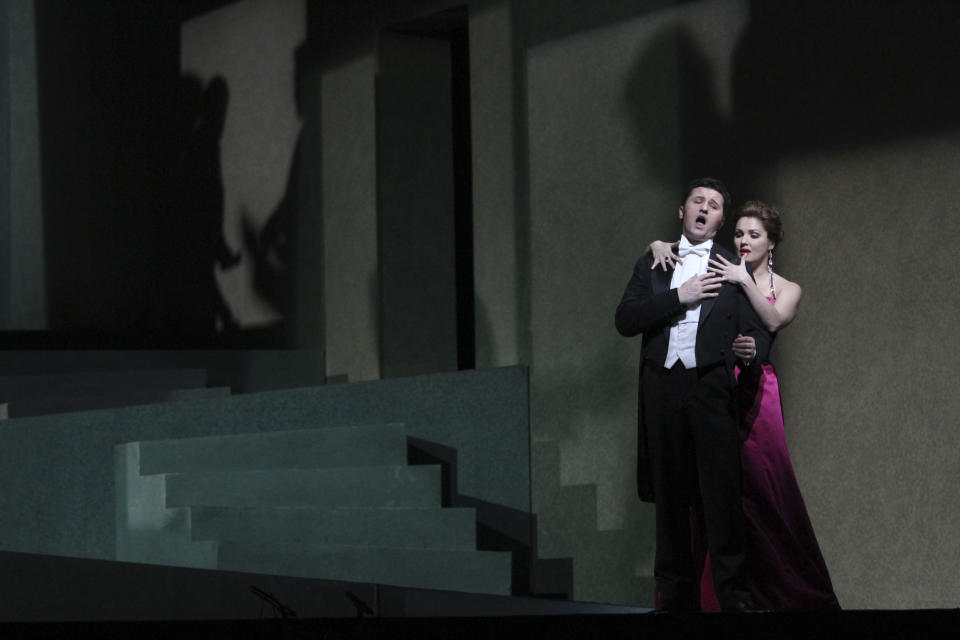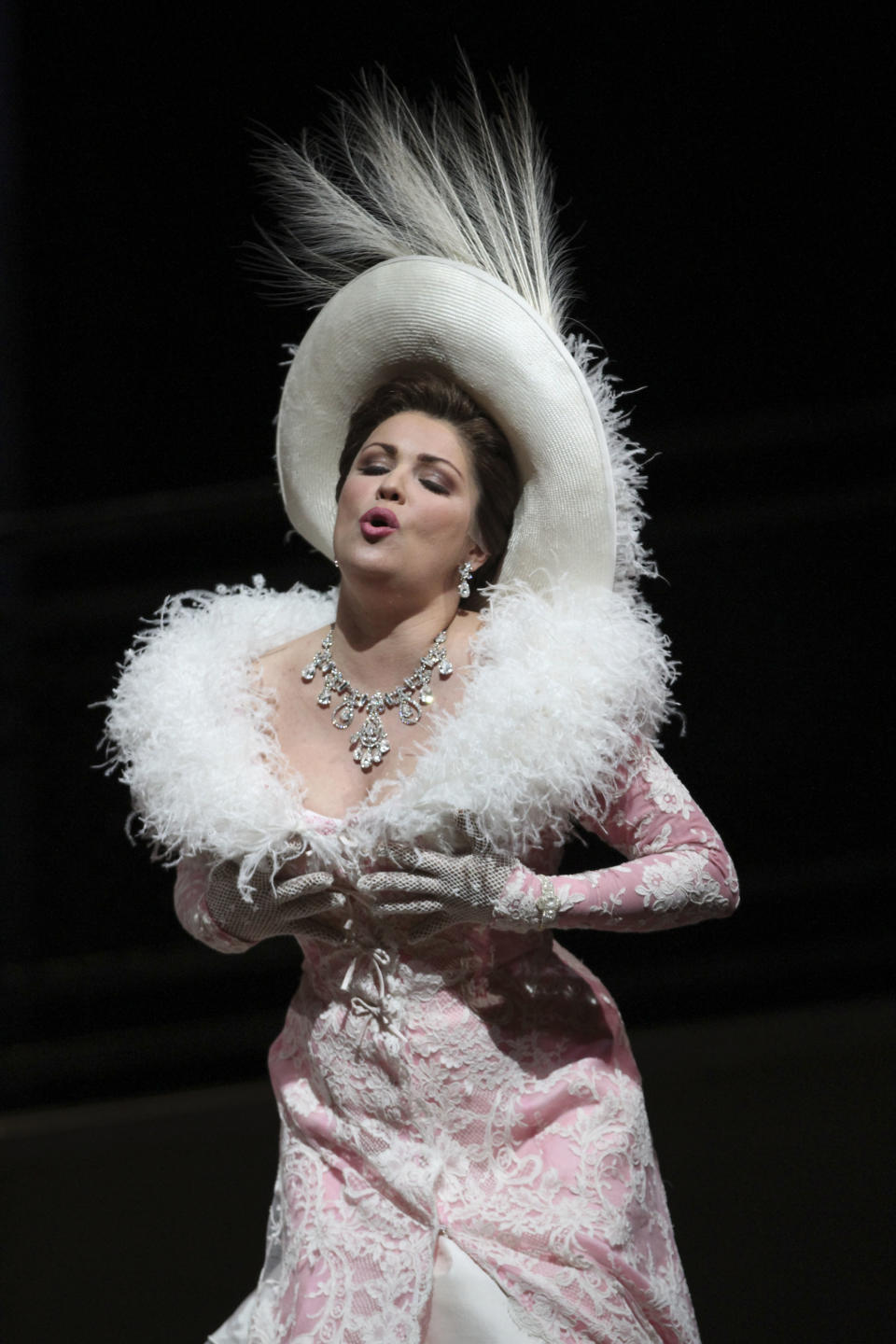New Met 'Manon' stars Netrebko, Beczala
NEW YORK (AP) — Unlike some recent productions that bury the music in hyperactive theatrics, the Metropolitan Opera's new production of "Manon" comes alive amid bold but minimalist sets that keep the focus on its stars — soprano Anna Netrebko and tenor Piotr Beczala.
In the new production of Jules Massenet's 19th century work, which debuted at the Met on Monday, director Laurent Pelly creates searing visual contrasts in this story about a 15-year-old from the countryside headed to a convent who instead turns into a Parisian prostitute, betraying her true love. He, embittered, becomes a priest.
Netrebko's full-blooded, vocally virtuosic Manon is at first surprising in a role usually sung by lighter, more delicate voices — Natalie Dessay, for instance, or the late Beverly Sills. But the Russian soprano's supercharged voice is a fine fit for a production that paints a picture of ravishing Paris — with a knife in it.
The blade ends up in the lovers' hearts.
The Met stage exploded with emotion and quicksilver gestures that spoke to an audience clearly drawn by a relationship that Facebook would call "complicated."
In his role debut, the 45-year-old Beczala may well be setting a gold standard as Manon's good-hearted lover, the Chevalier Des Grieux, with his vocal stamina, virile presence and impeccable technique. His voice traces rich melodic arches that rise to ethereal high tones culminating in "Ah, fuyez douce image" (Ah, flee, sweet image) as Des Grieux tries to mentally banish the love of his life.
Beczala sings with the wrenching intensity of a man destroyed by a woman who abandons him for champagne bubbles, bling and gambling sycophants.
She was once a simple girl in his old garret. There, she had said good-bye to a beloved little table before leaving for Paris — a last innocent gesture in "Adieu, notre petite table" ("Goodbye, our little table"), for which Netrebko toned down her powerhouse sound to a wistful purity.
Manon is soon deep into "sugar daddy" luxury, delivering "Obeissons quand leur voix appelle" ("Let us obey when their voice calls us") in a cold, scintillating voice that hit a few ringing high notes under pitch. Perhaps they were more noticeable because of her otherwise brilliant, sumptuous sound — especially in the outpouring of inner turmoil that drives her back to Des Grieux.
She confronts him in the chapel where Pelly pushes religion over the edge: Manon wraps herself around the priest, then straddles a bed behind the altar with such carnal passion that he soon joins her as she rips off his top and bares his chest.
Even the stone chapel pillars are disturbing, leaning slightly to the left to mirror two off-kilter spirits. Around the many ramps and stairs of his stark sets, Pelly drives the story to its tragic end on what could easily be a pier off Manhattan's West Side Highway. In this setting that gives the production a modern immediacy, she dies an ill outcast left only with Des Grieux's endless loyalty.
Somehow it all works, this fearless probing of the human psyche in love.
Other compelling visuals include Manon's costumes, from a dowdy gray dress to a lavish red gown for the sinister frivolity of the Act 3 gambling scene.
But the key to Manon's downfall is invisible — the French literary concept of the "femme maudite," a doomed woman Netrebko portrays as self-destructive yet self-propelled, not the fragile victim of worldly seduction in other productions.
Though not an especially exciting conductor, Fabio Luisi led the Met orchestra in a spirited and refined performance that breathed with the vocal nuances. The Met chorus lent both boisterous elan and comedy to the evening.
While Pelly's production is new at the Met, it was also presented at London's Royal Opera House in 2010, starring Netrebko.
The Met's "Manon" runs through April 23.
____
Online:
http://www.metoperafamily.org





